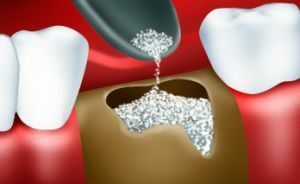 Bone tissue is often required for prosthetics of teeth and dental implantation, if it is deficient in the place of installation of the denture construction.
Bone tissue is often required for prosthetics of teeth and dental implantation, if it is deficient in the place of installation of the denture construction.
In order to install the implant, the bone should fit the size, have the desired height and width. Otherwise, the shelf life and strength of the artificial tooth will be many times lower.
Contents
- Bone component build-up
- Why bone deficiency occurs
- What build-up methods use
- Pros and cons of osteoregeneration
- Possible complications
- Practical experience
- Cost of intervention
Bony component build-up
Bone plasty is one of the sections of operative dentistry and is to a large extent a preventivemeasure.
Often it is used for implantation of the teeth and is held on the sides of the upper jaw. The increase of additional bone tissue contributes to the reliable anchoring of the implant and guarantees a longer service life.
This procedure requires the approval of a dentist or surgeon, and an intervention is only given after a series of necessary examinations. Osteoplasty makes it possible to establish an implant in any part of the jaw. The procedure of bone plastic is able to give a beautiful smile and a luxurious mood to a person.
The main factor for the operation is a small amount of bone in the area necessary for prosthetics, and the installation of an artificial dentition becomes impossible. The recovered volume of bone tissue will be different in each case.
Some people believe that jaw bone building is very simple and is not a serious procedure. In fact, in some cases it is, but everything is very individual. In any case, any surgical intervention is already a risk, and to any operation, specialists are approached with maximum seriousness.
Why bone deficiency occurs
The main reason for the shortage of tissue is its atrophy, which occurs in the area of the removed teeth. Teeth, when still healthy, working to give 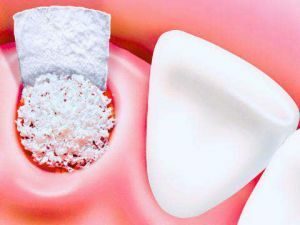 some of the load they received, bones. This process supports the bone in a functioning state, it grows and increases its volume.
some of the load they received, bones. This process supports the bone in a functioning state, it grows and increases its volume.
But immediately after tooth extraction the bone tissue stops feeling the load, relaxes and eventually disappears. Reduction of bone volume occurs both in width and height of the alveolar jaw bone.
Main causes of deficiency:
- atrophy or jaw injury;
- features of the structure of the jaw;
- a long time interval between tooth extraction and implantation.
What extension methods use the
The human jaws have a rather complex structure. The necessary method of treatment will be appointed after the establishment of an exact site with an atrophied bone.
An extension of the jaw bone under the dental implant is possible using the following techniques:
- The first method is autotransplantation .This is the process of transplanting your patient's tissues to the desired site. Similar
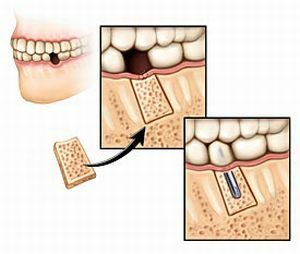 build-up occurs in 2 stages, most often with a lateral transplant. The first stage involves taking the necessary bone material. The second - the installation of the screw, then the bone flap is fixed in the desired area, then the gum is sewed. This option is the most optimal, because with it there is minimal rejection of the implant and it quickly heals. After the period of at least six months must pass for the full adaptation of the new bone tissue, during this time it will fully grow to the transplant and become a single whole. Only then is it possible to perform the procedure for implant installation.
build-up occurs in 2 stages, most often with a lateral transplant. The first stage involves taking the necessary bone material. The second - the installation of the screw, then the bone flap is fixed in the desired area, then the gum is sewed. This option is the most optimal, because with it there is minimal rejection of the implant and it quickly heals. After the period of at least six months must pass for the full adaptation of the new bone tissue, during this time it will fully grow to the transplant and become a single whole. Only then is it possible to perform the procedure for implant installation. - Sinus-lifting - this operation is performed when it is necessary to lengthen the upper part of the jaw, during which the lifting of the maxillary sinus is performed. Therefore, the procedure is carried out to increase the bone length. Lack of bone tissue is very common, about 60-70% of all cases. The reason for this is mainly the individual anatomical features of each person. The first step is filling the sinus with a tissue, after which the implant is implanted. There are 2 types of procedure: closed and open. Differences between them only in the time of installation of the prosthetic design.
- The following method is tissue regeneration , using an artificial source. Its essence is to build up the bone, while using synthetic materials, in this case, all the functions of the bone perform an artificial filler, which completely replaces it. However, this implant can not be called a bone, it is only a synthetic, artificial substance produced in the laboratory. Depending on the production options and the type of material, all bone substitutes are divided into: Absorbable and nonabsorbable. In other words, the human body can replace the synthetic material with bone tissue, or tear it away. In any case, the main goal is regeneration, that is, the restoration of tissues for the further installation of the implant.
- The last method is barrier membranes .Nowadays two kinds of membranes are actively used: resorbable( resorbed independently) and non-resorbable( require subsequent removal).This type of bone growth is considered to be the least traumatic and very effective. The membranes are used to fix the transplanted bone blocks. The use of such membranes is necessary only when it is necessary to transplant the bone, to the place of contact with the mucous membrane. The use of the membrane allows to ensure a good isolation of the bone component from the surrounding soft tissues, and does not allow it to wash out from the wound.
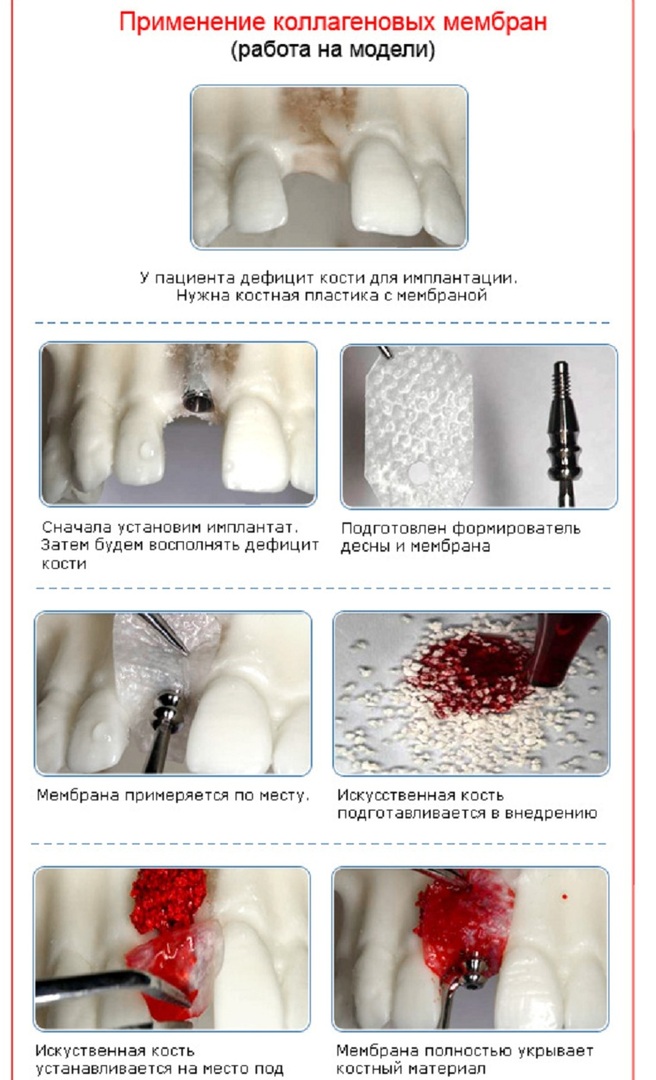
Osteoplastic can be:
- free - the transplanted part is completely separated from the original bone;
- not free - the transplanted tissue retains its connection with the parent bone.
This procedure is used for one purpose - elimination of bone defect, restoration of its shape and structure. It is also used to stimulate the regeneration process, recovery from fractures, eliminate problems with tubular bones.
Advantages and disadvantages of
osteoregeneration Among the obvious advantages of the procedure are the following:
- has the ability to restore the missing volume of tissues;
- a chance to get new teeth that almost completely replace the present ones;
- due to the closed type of operation, the whole process becomes less traumatic.
It is worth mentioning about unsuccessful cases of osteoplasty:
- sometimes the patient develops an inflammatory process;
- damage the sinus of the nose, which in the future cause a chronic cold.
Also from the disadvantages can be identified that the rehabilitation period after the operation is quite long.
In addition, the patient is required to comply with several mandatory requirements: one can not cough or sneeze, as this can knock out the implant from the bone. After surgery, do not recommend eating solid, cold or hot foods.
Possible complications of
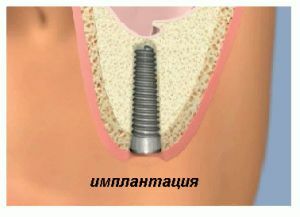 Such operations are almost always carried out at a high level, and patients are satisfied. However, any deviation from the norm during the intervention is likely to lead to serious problems.
Such operations are almost always carried out at a high level, and patients are satisfied. However, any deviation from the norm during the intervention is likely to lead to serious problems.
In the case of membranes in rare cases, it is possible to accidentally expose a seam line, which in almost all cases leads to a serious inflammatory process. If there is inflammation with the formation of pus, you will have to completely remove all artificial materials located under the mucous membrane. After a while, a new procedure will be required.
In addition, when bone implants are used, approximately half of the bone component is lost during implantation, which may be the reason for another operation. Also, it is not an exception and having discovered the already stuck bone when implant implantation, this may be due to the fact that the material has not taken root sufficiently.
Practical experience of
Bone growth under the dental implant is not the most pleasant procedure, but it is quite safe, which is confirmed by numerous reviews of satisfied patients.
Osteoplasty was performed 4 days ago. The cheek is completely swollen, I walk like a hamster. The membrane was implanted, the bone material was poured, I constantly felt some particles in my mouth. The operation itself was not bad, it did not feel pain, but now there is a big bruise and swelling. She stabbed antibiotics, applied cold, but the swelling did not want to leave me. Yesterday morning, even the eye swelling, quite unpleasant, I hope soon all will improve.
Elena, 01/27/2017
11 days ago, I was treated with a sine lifting procedure. Without a membrane, but with a one-time insertion of the implant. The first week was greatly infested with grains in the mouth. Days 5 was a bump on the face, more to the lower jaw, although the operation was on the top. Well at least there were no bruises. Now I feel better, I drink antibiotics a week.
Alexandra, 03/05/2017
Cost of intervention
The cost of the procedure varies depending on the different methods, quantity and quality of the required material.
Thus, with tissue regeneration, say, 3 teeth, the cost of building bone tissue will be about 30 thousand rubles, without taking into account the price of materials. The membrane costs 10 thousand. The cost of quality bone material also starts from 10 thousand. 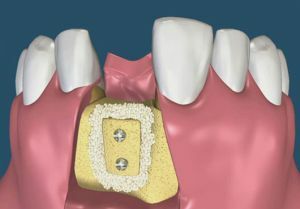
But the method of replanting the bone block is much more expensive. Only for the collection of material will have to pay 35 thousand, the second operation for the implementation of the unit will cost from 50 to 70 thousand rubles, depending on the clinic in which the operation will be performed. The lowest price for sinus-lifting - only 20 thousand.
Finally it is worth saying that it's better not to delay the time of the operation, in order not to exacerbate the problem. Many patients doubt only because of the patient cost, than because of risks. But it is worthwhile to think wisely, quality and long-term treatment now is not cheap.
The main thing is that the operation is supervised by an experienced specialist, they have a deficit in our country, however, if you try, you can find a high-quality doctor.
